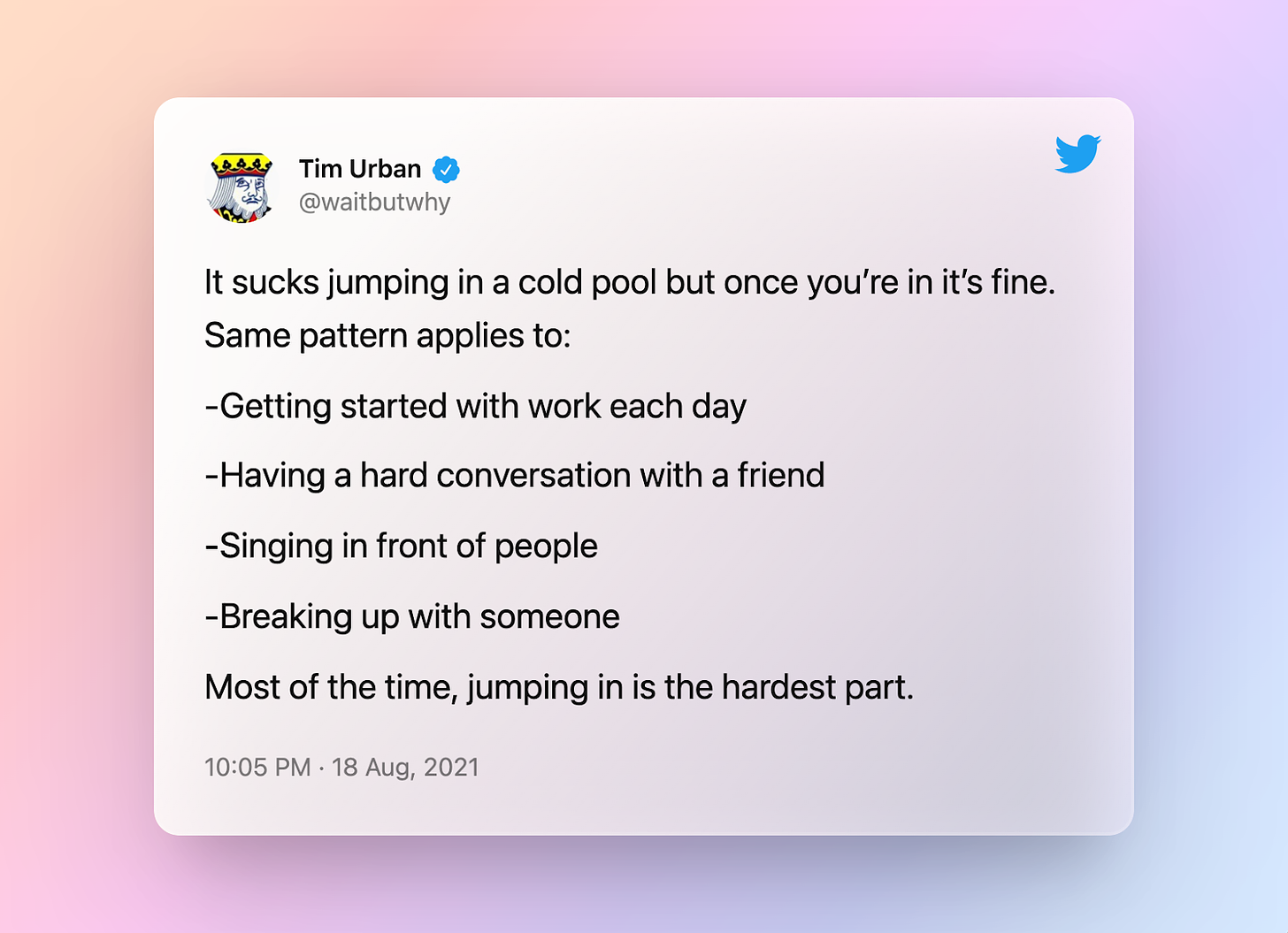#35 Curiosity is like compound interest; it grows faster when you invest in it.
How to be curious, coach better, form habits and write user manuals
Matthew Royse shared 5 simple tips to help become more curious.
Be ready for unexpected and unfamiliar;
Don’t interrupt others; listen with genuine interest
Deepen your understanding; 'why' and 'how' nourish a curious mind
Challenge your perspective; different points of view help become better problem solvers
Get out of your comfort zone; seek new experiences, explore new things.
I started this newsletter to experience & share pretty much all the above. I am creating the top of the funnel on ideas & insights - you can go down the rabbit hole in whatever interests you.
Today's mix has been a difficult selection. It was hard curating good stuff from already curated 'best of 2021' posts from everyone. There was also the temptation of doing my own 'best of 2021' post. I, somehow, settled for sticking to the usual format and focusing on serving fresh ideas. So here you go...
1.
Through a series of posts, Paul Stansik expands on his concept of "Chief Reminding Officer". Think of this person as the coach, whose core job is getting the best from his team. CRO or otherwise, Paul’s framework and recommendation are relevant for any leader.
Over a 4 part series, he focuses on three coaching disciplines:
Feedback — Directing people to “do this, not that”
Recognition — Praising the right behaviours
Repetition — Sharing memorable cues that spur action
The below template expands them a little more.
Source: Paul’s Medium post
I recommend reading the detailed posts. His examples from sports coaching make the ideas simple & easy to understand.
2.
Keystone habits are “compounding habits.” They tend to have ripple effects which change your behaviour in unexpected ways. They change more than just our behaviour—they change how we see ourselves.
This post on Zapier blog has a good primer on keystone habits. It offers useful insights for getting started on habits that provide long-lasting benefits.
If you are the “new year resolution” type, you must read this to help start in the right way.
3.
I came across the concept of a personal user manual in Julie Zhuo’s post titled “A user guide to working with you.” As the title suggests, the user manual is a document to highlight the key aspects of your way of working. It is a collection of FAQs on things that matter when working with you. It's the documentation of said & unsaid norms of interacting with you.
Khe Hy has done a detailed post on this topic, as well. He goes into good detail on areas that you should cover in this manual - including the why and how.
I use a basic version of the user manual for my team. It's something I share one day 1 with all the new joiners in my team. I call it the "Way of working". It lays out some details of navigating in our org & team. There is some glimpse about my working style as well.
As I re-read through the above posts, I realize, my User manual is still scratching the surface. I've still not touched the gory details, articulated the nuances. It's still not that personal.
Why? Because questions like "Things I do that may annoy you" or "How to help me" or "What people misunderstand about me" are tough to answer.
They need a high degree of self-awareness. Something that comes only with honest self-assessments and radical candour level feedbacks. I'm still to gain intellectual honesty for good self-assessments. Managers, mentors or teams that provide high-quality objective feedback are rare.
And so, I lack the required articulation in many areas of interpersonal interactions. I've some directional inputs, but they are more at optics levels. I'm not 100% sure if they will hold in every moment, more so in those that matter.
This is one area I will focus on in 2022. To build clarity, conviction and articulation on my work, strengths & priorities. And, I will translate that into a more effective user manual for me. Game on!
4.
Tim Urban has a unique style of storytelling. He uses little details that most of us fail to observe. Every time I read his work I discover these tiny details that make me go aha. He weaves his ideas around these aha moments and creates a memorable story.
The tail end takes a new perspective on the span of human life. It gives us a new way to look at the numbers of years/months/days. One that is more connected to moments worth cherishing and living for.
Simple argument, worth our attention.
5.
Some random goodness from the internet:
Photo collection: Mesmerizing photos of northern lights from the Northern Lights Photographer of the Year 2021 selection.
Resources: If you work on user experience and keep wondering “how do other apps do this?” then check out designvault.io for UI patterns & design inspiration from real products. It’s a readymade library for your research & reference.
Short reads: Crazy stories round office supplies, Sushi Carousels, train restaurants and other innovative ways of contact-free dining, 100 tips for a better life, Story of the Italian town that built its own sun.
Long reads: A mystery cube, a secret identity, and a puzzle solved after 15 years
Before we sign off, here's a snapshot of a tweet worth saving.
That's all for this week, folks!
If you enjoyed this post, show your love by commenting and liking it. I write this newsletter to share what I learnt from others. If you learnt something from this today, why not share it with a couple of your friends to continue this chain?





